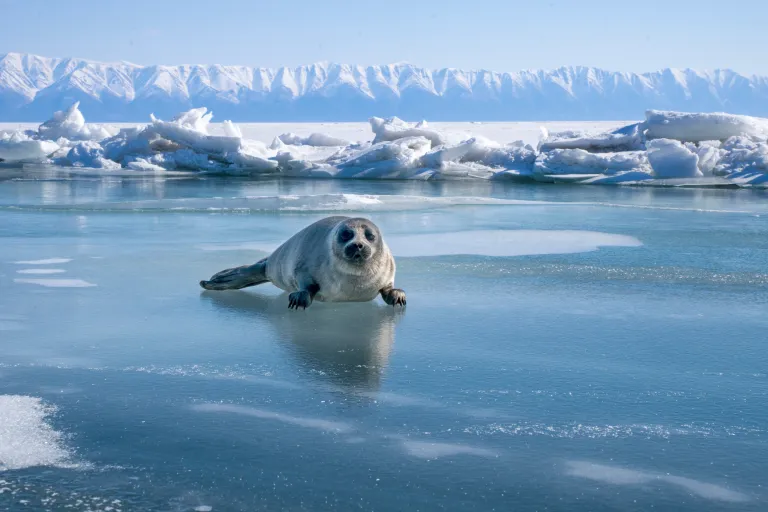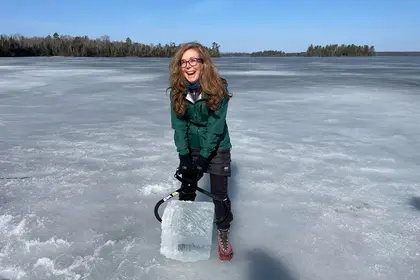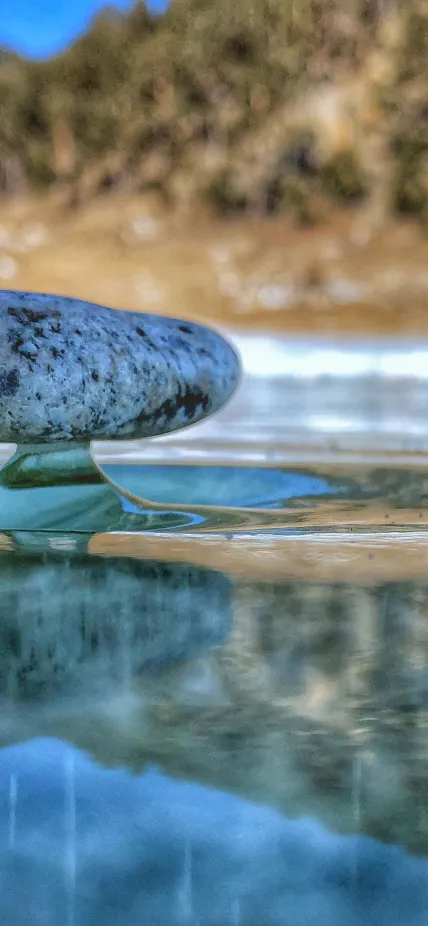
Pasadena, CA—The world’s freshwater lakes are freezing over for shorter periods of time due to climate change. This shift has major implications for human safety, as well as water quality, biodiversity, and global nutrient cycles, according to a new review from an international team of researchers led by Carnegie Science’s Stephanie Hampton.
Undertaken by scientists based in the United States, Canada, and Sweden, this analysis represents a major call-to-action for wintertime freshwater ecology research. It is published in Science.
The world has millions of freshwater lakes, most of which freeze during the winter. The team’s rigorous review indicates a massive shift in lake ice duration over the past 25 years, with melting starting at least a month earlier than in previous centuries.
“The average duration of iced-over conditions has decreased by 31 days over the last 165 years and thousands of lakes that historically froze over every winter now experience ice-free years,” Hampton explains. “This has major implications for communities around the world that depend on these lakes for drinking water, recreation, fishing, and ice-road transportation, as well as for spiritual and cultural identity.”
The Deputy Director for Carnegie Science’s Biosphere Sciences and Engineering division, Hampton is a freshwater ecologist with 18 years of experience studying microscopic plankton in Lake Baikal in Siberia. For the past decade, she has been broadening the scope of her work to address global trends in lake ice in a warming world.
The team’s analysis breaks down the ecological harm caused by ice loss ranging from the health of individual lakes to the delicate balance of dynamic cycles that comprise the Earth System.
The researchers make the case that studying lakes during wintertime—traditionally avoided due to logistical challenges and safety concerns—must be undertaken by ecologists around the world in order to truly understand the wide-ranging risks posed by ice loss. Their paper identifies several key areas for additional study that have major implications for human and environmental health.

Crucially, shorter ice duration and warmer temperatures affect biogeochemistry and microbial metabolism in lakes and put them at greater risk for water quality impairments, according to Hampton and her collaborators. For example, toxic blooms of cyanobacteria can form in warmer water, putting both fish and humans at risk. Further complicating the situation, the low-oxygen conditions caused by these blooms can release metals that are sequestered in lakebed sediment, posing additional water quality concerns.
Changes in ice duration also have implications for the biodiversity of lake ecosystems, the researchers indicate. For example, temperature changes can allow invasive species that are adapted to warmer water to thrive while cold-water fish and other organisms are negatively affected.
The researchers point out the importance of further research on how loss of lake ice is affecting the global carbon cycle. Evidence indicates that ice cover enables lakes to sequester carbon from the atmosphere and warming water releases more methane, nitrous oxide, and other greenhouse gases.
Furthermore, ice loss both results in increased evaporation of lake water—which over time could decrease the surrounding community’s access to freshwater—and potentially exposes those living nearby to more intense snowfall events and greater erosion. Additional research is needed to understand the many ways that lakes contribute to the water cycle in a warming world.
“It is abundantly clear that many lakes are freezing later, melting earlier, or both,” Hampton asserts. “Over a billion people live near lakes that freeze, and these changes are now affecting people’s uses of lakes. By analyzing what we know about how these changes are affecting lake ecosystems and human communities, we have identified key topics that must be studied in greater detail. It is only by understanding the breadth and complexity of these risks that we can develop strategies for mitigating them.”

Although scientists like Hampton have been studying the ecology of Northern Hemisphere and high-elevation lakes for decades, wintertime lake research is an emerging field. Hampton and other colleagues are at the forefront of advancing safe research protocols in iced-over conditions. Earlier this year, she and her collaborators hosted “winter school” at Wisconsin’s Trout Lake, where early career researchers were trained in how to safely take samples from iced-over bodies of water.
“Looking ahead, we need to invest in a deeper understanding of the crucial roles that lake ice plays in the health of our planet and in the communities that depend on these bodies of water,” Hampton concludes.
The Science paper’s co-authors include Carnegie Science’s Ryan McClure, along with Stephen Powers of Baylor University, Hilary Dugan of the University of Wisconsin, Lesley Knoll of Miami University of Ohio, Bailey McMeans of the University of Toronto, Michael Meyer of the U.S. Geological Survey, Catherine O’Reilly of Illinois State University, Ted Ozersky of the University of Minnesota, Sapna Sharma of York University, David Barrett of the University of Calgary, Sudeep Chandra of the University of Nevada, Joachim Jansen and Gesa Weyhenmeyer of Uppsala University, Milla Rautio of the Université du Québec, and, Xiao Yang of Southern Methodist University.
